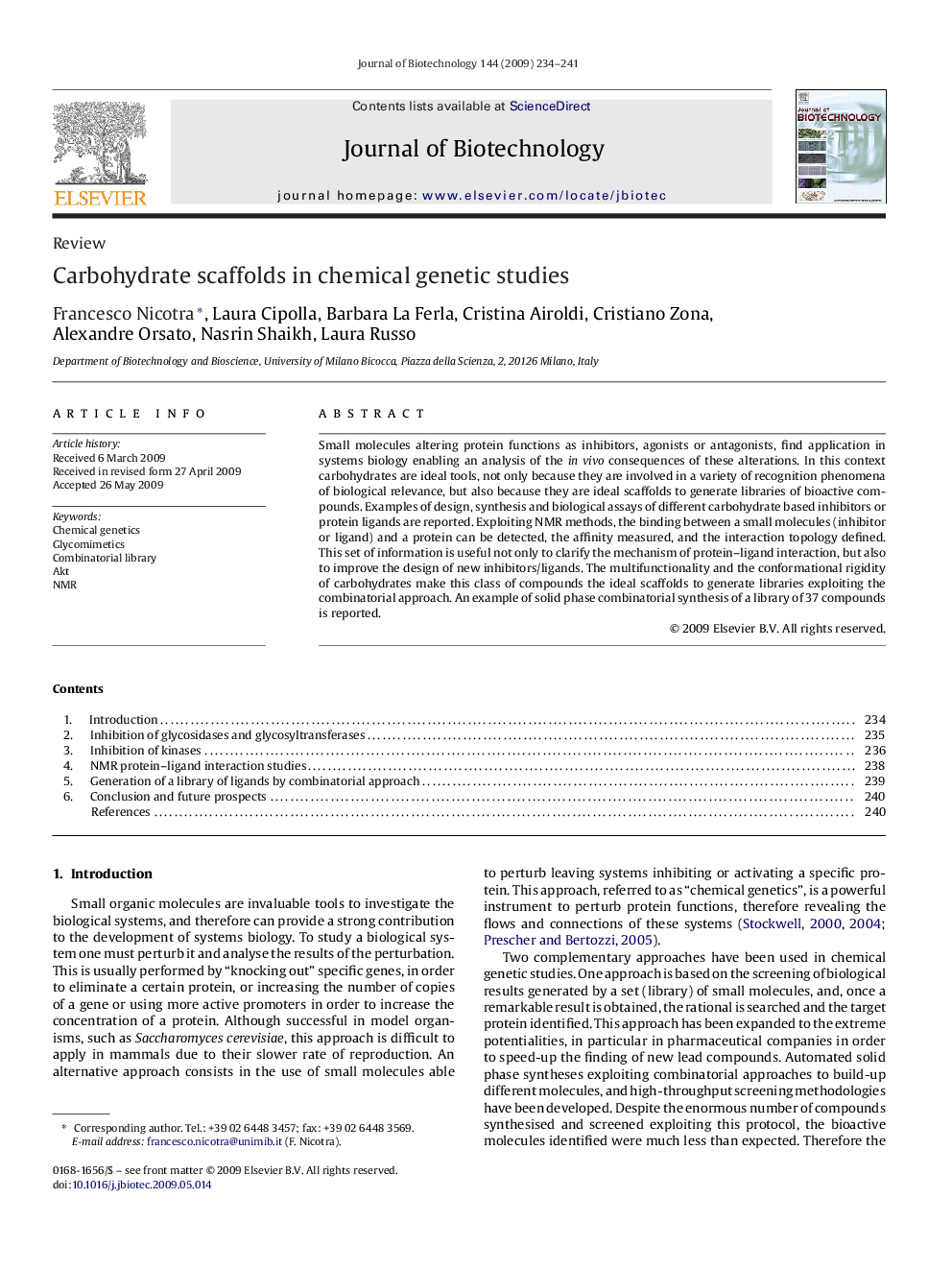| Article ID | Journal | Published Year | Pages | File Type |
|---|---|---|---|---|
| 24116 | Journal of Biotechnology | 2009 | 8 Pages |
Small molecules altering protein functions as inhibitors, agonists or antagonists, find application in systems biology enabling an analysis of the in vivo consequences of these alterations. In this context carbohydrates are ideal tools, not only because they are involved in a variety of recognition phenomena of biological relevance, but also because they are ideal scaffolds to generate libraries of bioactive compounds. Examples of design, synthesis and biological assays of different carbohydrate based inhibitors or protein ligands are reported. Exploiting NMR methods, the binding between a small molecules (inhibitor or ligand) and a protein can be detected, the affinity measured, and the interaction topology defined. This set of information is useful not only to clarify the mechanism of protein–ligand interaction, but also to improve the design of new inhibitors/ligands. The multifunctionality and the conformational rigidity of carbohydrates make this class of compounds the ideal scaffolds to generate libraries exploiting the combinatorial approach. An example of solid phase combinatorial synthesis of a library of 37 compounds is reported.
